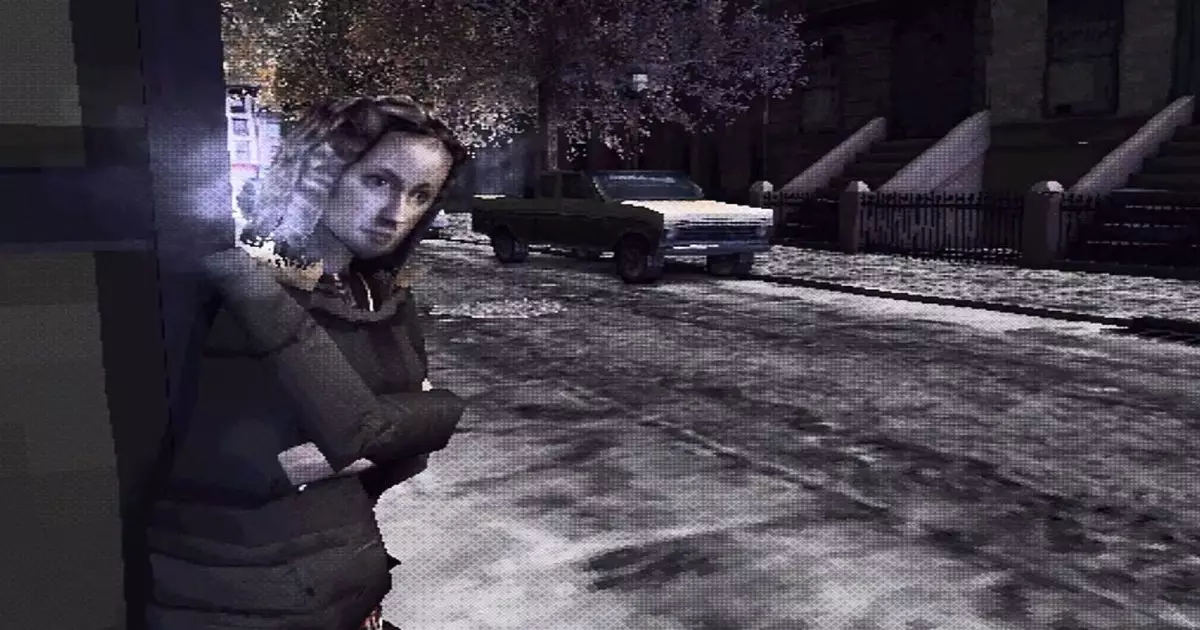The indie gaming scene is thriving, particularly through a revival of retro aesthetics that evoke nostalgia for the golden era of gaming. One of the most interesting entrants in this movement is a project titled “Cold And Afraid.” This game taps directly into the vein of 1990s gaming culture, specifically drawing from the PlayStation era, when games were often rented for a weekend binge. Let’s delve into the ways “Cold And Afraid” is both a homage and a distinct voice in this popular trend.
The art style of “Cold And Afraid” is unmistakably influenced by the classic PlayStation games that many gamers fondly remember. The chunky characters and heavy dithering provide an alluring throwback to a time when graphics had charm and character, despite technical limitations. The gameplay mechanics are set to encompass the traditional tank controls, reminiscent of the era’s design choices that have become both loved and loathed by gamers. It’s interesting to note how indie developers often wield nostalgia as both a creative tool and a selling point. This balancing act can sometimes lead to accusations of shallow homage, but “Cold And Afraid” presents itself with an important twist: it is configured around the value of narrative and player choices, which aims to elevate the gameplay experience beyond mere retro aesthetics.
At its core, “Cold And Afraid” unfolds as a murder mystery, crafting an intricate tale of a serial killer on the prowl in an unnamed American city. What stands out is the game’s proposed mechanism of “consequential dialogue choices.” This feature aims to engage players, pushing them to make decisions that could alter their experience significantly. Coupled with a Time Event system requiring specific timing for character interactions, this narrative strategy is reminiscent of games like “Indigo Prophecy,” seeking to create tension and urgency in storytelling. For a genre often criticized for prioritizing visuals over value, this focus on narrative depth is a refreshing approach that might capture players’ imaginations.
Behind “Cold And Afraid” is solo developer Sunamii, who has courageously set high expectations for the game’s impact. Sunamii recognizes the transient nature of many indie games today and aspires to create something that will resonate long after its initial release. This sentiment reveals an understanding of the oversaturated indie market, where many titles slip through the cracks of obscurity. Sunamii’s endeavor is not merely about creating a game but about crafting a lasting legacy in a medium often marred by ephemeral success. This ambition is crucial for indie developers who wish to stand out in an environment where the next big hit can overshadow yesterday’s triumphs in a heartbeat.
Sunamii does not limit himself to just one project; there’s also “Twilight Bastion,” a title that began as an homage to the beloved classic “Vagrant Story.” However, through its development, it has morphed into a more hybrid feel, mixing elements from titles like “Demon’s Souls” and “Symphony of the Night.” Such evolution not only reflects the adaptability of indie developers but also their willingness to experiment with established formulas in pursuit of innovation. Each project becomes a canvas where influences can blend together, leading to unique creations that classical titles could not have envisioned.
The growing trend of reviving retro gaming aesthetics can be traced back to movements like the Haunted PS1 Demo Discs, which sparked interest and appreciation for throwback visuals. Many contemporary indie titles have embraced this aesthetic, sparking a debate on the valorization of the past through modern lenses. Games like “Sorry We’re Closed” and “Dread Delusion” showcase this commitment to keeping the retro flame alive while also innovating within that framework. With more developers joining the retro aesthetic wave, there is hope for a thriving subculture that unites old and new gamers under a shared banner of nostalgia and creativity.
“Cold And Afraid” stands as an intriguing examination of not just a specific game, but also a reflective lens into the current state of indie gaming culture. It embodies a mixture of nostalgia, narrative depth, and high aspirations — marking a significant contribution to a vibrant and evolving gaming landscape. The question remains: will this commitment to substance in a visually-driven genre pay off? Only time will tell as Sunamii continues to develop his unique vision in “Cold And Afraid.”

